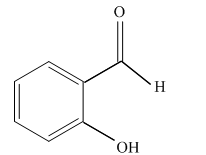
(a)
Interpretation:
Write a structural formula for the principal organic product formed by treating with following compound with

Concept Introduction:
Reduction is the process of addition of hydrogen to the compound.
(b)
Interpretation:
Write a structural formula for the principal organic product formed by treating with following compound with

Concept Introduction:
Reduction is the process of addition of hydrogen to the compound.
(c)
Interpretation:
Write a structural formula for the principal organic product formed by treating with following compound with

Concept Introduction:
Reduction is the process of addition of hydrogen to the compound.
(d)
Interpretation:
Write a structural formula for the principal organic product formed by treating with following compound with

Concept Introduction:
Reduction is the process of addition of hydrogen to the compound.
Trending nowThis is a popular solution!

Chapter 17 Solutions
Introduction to General, Organic and Biochemistry
- 17-36 Explain why the reduction of an aldehyde always gives a primary alcohol and the reduction of a ketone always gives a secondary alcohol.arrow_forward17-33 What simple chemical test could you use to distinguish between the members of each pair of com pounds? Tell what you would do, what you would expect to observe, and how you would interpret your experimental observation. (a) Pentanal and 2-pentanone (b) 2-Pentanone and 2-pentanolarrow_forward17-70 What simple chemical test could you use to distinguish between the members of each pair of com pounds? Tell what you would do, what you would expect to observe, and how you would interpret your experimental observation. (a) Benzaldehyde and cyclohexanone (b) Acetaldehyde and acetonearrow_forward
- 2 (Chemical Connections 19A) Locate the ester group in pyrethrin I and draw a structural formula for chrysanthemic acid, the carboxylic acid from which this ester is derived.arrow_forward17-35 Suppose that you take a bottle of benzaldehyde (a liquid, bp 179°C) from a shelf and find a white solid in the bottom of the bottle. The solid turns litmus red; that is, it is acidic. Yet aldehydes are neutral compounds. How can you explain these observations?arrow_forward17-34 Explain why liquid aldehydes are often stored under an atmosphere of nitrogen rather than in air.arrow_forward
- 17-3 1 Draw a structural formula for the principal organic product formed when each compound is treated with K2Cr2O7/H2SO4. If there is no reaction, say so. (a) Butanal (b) Benzaldehyde (c) Cyclohexanone (d) Cyclohexanolarrow_forward17-62 Show how to bring about these conversions. In addition to the given starting material, use any other organic or inorganic reagents as necessary. (a) 1-Pentene to 2-pentanone (b) Cyclohexene to cyclohexanonearrow_forward18-6 Name and draw structural formulas for the four carboxylic acids with the molecular formula C5H10O2. Which of these carboxylic acids are chiral?arrow_forward
- 17-26 Account for the fact that acetone has a higher boiling point (56°C) than ethyl methyl ether (11°C) even though their molecular weights are almost the same.arrow_forward17-69 Propanal (bp 49°C) and 1-propanol (bp 97°C) have about the same molecular weight, yet their boiling points differ by almost 50°C. Explain this fact.arrow_forward17-73 Alcohols can be prepared by the acid-catalyzed hydration of alkenes (Section 12-6B) and by the reduction of aldehydes and ketones (Section 17-4B). Show how you might prepare each of the following alcohols by (1) acid-catalyzed hydration of an alkene and (2) reduction of an aldehyde or a ketone. (a) Ethanol (b) Cyclohexanol (c) 2-Propanol (d) 1-Phenylethanolarrow_forward
 Introduction to General, Organic and BiochemistryChemistryISBN:9781285869759Author:Frederick A. Bettelheim, William H. Brown, Mary K. Campbell, Shawn O. Farrell, Omar TorresPublisher:Cengage Learning
Introduction to General, Organic and BiochemistryChemistryISBN:9781285869759Author:Frederick A. Bettelheim, William H. Brown, Mary K. Campbell, Shawn O. Farrell, Omar TorresPublisher:Cengage Learning Organic ChemistryChemistryISBN:9781305580350Author:William H. Brown, Brent L. Iverson, Eric Anslyn, Christopher S. FootePublisher:Cengage Learning
Organic ChemistryChemistryISBN:9781305580350Author:William H. Brown, Brent L. Iverson, Eric Anslyn, Christopher S. FootePublisher:Cengage Learning


